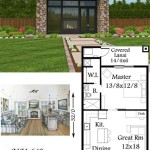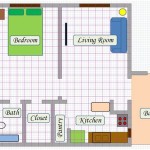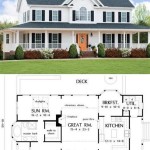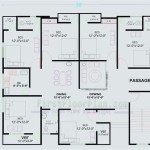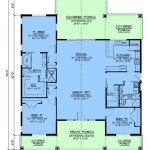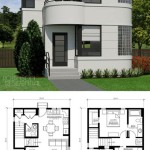How to Create Floor Plans at No Cost
Generating floor plans is a fundamental step in various processes across architecture, interior design, real estate, and even home improvement projects. The perception that professional software or expensive services are mandatory for this task is a misconception. Numerous free tools and techniques exist that enable users to create accurate and functional floor plans without incurring any financial burden.
This article will explore comprehensive methodologies and readily accessible resources, enabling individuals to produce their own floor plans effectively and efficiently at no cost. These approaches will cover a range of skill levels, ensuring that both novice and experienced users can benefit from the presented information.
Manual Measurement and Sketching
The most basic and historically significant method of creating a floor plan involves manual measurement and sketching. While this approach requires careful attention to detail and accuracy, it remains a viable option, particularly for smaller projects or preliminary visualizations. To begin, the user needs only a few essential tools: a measuring tape (preferably a long one), a pencil, an eraser, and graph paper or plain paper.
The first step is to systematically measure each room and hallway within the space. It is crucial to measure all walls, including the thickness of interior and exterior walls. The measurements should be recorded in a consistent unit, such as feet and inches or meters and centimeters. Precision is paramount; minor inaccuracies during the measurement phase can compound and result in a distorted or unusable floor plan.
As each measurement is taken, it should be immediately recorded on the paper. A rough sketch of the room layout will help in organizing the measurements. Focus on creating a proportional representation of the space, even if the initial sketch is not perfectly to scale. Label each measurement clearly on the sketch to avoid confusion later.
Once all rooms have been measured, the next step involves transferring the measurements to graph paper. The graph paper provides a grid that facilitates drawing to scale. A specific scale, such as 1/4 inch representing 1 foot, should be chosen and consistently applied throughout the drawing process. This entails carefully converting the real-world measurements into their scaled equivalents on the graph paper.
Using the scaled measurements, the user can begin drawing the walls of each room. It is important to maintain accuracy by aligning the drawn lines with the grid of the graph paper. After the walls are drawn, features such as doors, windows, and built-in cabinets can be added. The placement of these features should be based on their measured locations within the space.
This manual method, while free, is time-consuming and requires meticulous attention to detail. Potential drawbacks include the possibility of human error in measurement or drawing and the difficulty in making revisions once the floor plan is complete. However, for those willing to invest the time and effort, it provides a tangible and hands-on approach to floor plan creation.
Utilizing Free Online Floor Plan Software
The digital age has ushered in a multitude of free online floor plan software options, providing user-friendly interfaces and automated features that streamline the floor plan creation process. These tools typically offer a range of functionalities, including pre-designed templates, drag-and-drop elements, and the ability to generate 2D and 3D visualizations.
Before selecting a specific software program, it is advisable to research and compare the features offered by different platforms. Some popular free options include Floorplanner, RoomSketcher Free, and SketchUp Free (web version). Each of these programs has its own set of strengths and weaknesses, so the choice should be based on the user's specific needs and technical capabilities.
Once a suitable software platform has been selected, the user typically needs to create an account. Many free versions of these software programs may have limitations on project storage or feature access, but they usually provide sufficient functionality for basic floor plan creation.
The floor plan creation process generally involves starting with a blank canvas or choosing a pre-designed template that closely resembles the space being planned. The user can then draw the walls of each room, entering the dimensions either manually or by visually adjusting the lines on the screen. The software automatically calculates the area of each room and the overall dimensions of the floor plan.
After defining the room layouts, the user can add architectural elements such as doors, windows, stairs, and fireplaces. These elements are usually available as pre-designed objects that can be dragged and dropped into the floor plan. The user can customize the size, position, and orientation of these elements to accurately reflect their real-world counterparts.
Many free floor plan software programs also offer a library of furniture and fixtures that can be added to the floor plan. This enables the user to visualize the arrangement of furniture and assess the flow of traffic within the space. The furniture and fixtures can be easily moved, rotated, and resized to experiment with different layouts.
One of the significant advantages of using online floor plan software is the ability to generate different types of visualizations. Most programs offer both 2D and 3D views of the floor plan. The 3D view allows the user to experience the space in a more immersive way and to identify potential design flaws that may not be apparent in the 2D view.
When the floor plan is complete, it can be saved in various file formats, such as PDF, JPG, or PNG. Some programs also offer the option to share the floor plan with others online or to collaborate on the design in real-time.
While free online floor plan software provides a convenient and efficient way to create floor plans, it is important to be aware of the limitations of the free versions. These limitations may include restrictions on the number of projects that can be saved, the size or complexity of the floor plans that can be created, or the availability of certain features. However, for many users, the free versions offer sufficient functionality to meet their needs.
Leveraging Mobile Applications for Simple Floor Plans
Mobile applications offer another avenue for creating floor plans at no cost. These apps, designed for smartphones and tablets, often utilize the device's camera and sensors to facilitate quick and approximate floor plan generation. While not always as precise as manual measurements or dedicated software, they provide a convenient solution for initial space planning or quick reference.
Many free mobile apps are available on both Android and iOS platforms that allow users to create floor plans. Some popular options include Magicplan (offers a limited free version), RoomScan Pro (also has a free option), and many others that differ in features, ease of use, and output quality. It's recommended to explore several options to find one that aligns with individual requirements.
The basic principle behind these apps is that they use the device's camera and sensors (such as accelerometers and gyroscopes) to measure the dimensions of a room. The user typically stands in the center of the room and slowly pans the camera around the perimeter, capturing the outlines of the walls, doors, and windows.
The app then uses this information to generate a rough floor plan. The accuracy of the floor plan depends on the quality of the device's sensors and the skill of the user in panning the camera smoothly and accurately. Some apps also allow the user to manually adjust the dimensions of the rooms to improve accuracy.
Once the floor plan has been generated, the user can add furniture, fixtures, and other architectural elements from the app's library. These elements can be dragged and dropped into the floor plan and their size and position can be adjusted to reflect their real-world counterparts.
The floor plan can then be saved and shared with others. Some apps allow the floor plan to be exported in various file formats, such as PDF, JPG, or DXF. The DXF format is particularly useful if the floor plan needs to be imported into a more advanced CAD program for further editing.
It is important to note that mobile apps are generally not as accurate as manual measurements or dedicated floor plan software. The accuracy of the floor plan can be affected by factors such as the lighting conditions in the room, the presence of obstacles, and the stability of the user's hand. Therefore, mobile apps should be used primarily for quick and approximate floor plan generation, rather than for precise architectural drawings.
Despite their limitations, mobile apps offer a convenient and accessible way to create floor plans on the go. They are particularly useful for real estate agents, interior designers, and homeowners who need to quickly visualize and share space planning ideas.
In conclusion, while professional floor planning software and services offer advanced features and precision, numerous free alternatives exist that can effectively meet the needs of many users. By employing manual methods meticulously, leveraging the capabilities of free online software, or utilizing mobile applications, individuals can generate functional and visually informative floor plans without incurring any financial cost. The choice of method depends on the user's specific requirements, technical proficiency, and desired level of accuracy.

Floor Plan Creator And Designer Free Easy App

Floor Plan Creator And Designer Free Easy App

11 Best Free Floor Plan For 2024

20 Best Floor Plan Apps To Create Your Plans Foyr

Draw Floor Plans With The Roomsketcher App

Draw Floor Plans With The Roomsketcher App

Floor Plan Creator And Designer Free Easy App

Draw Floor Plans With The Roomsketcher App

Homebyme Archives Free House Plan And Apartment

Free Editable Open Floor Plans Edrawmax

